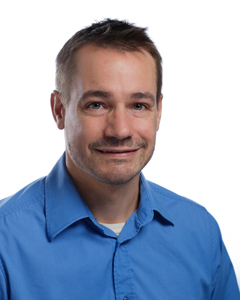Program Information
Reference Dosimetry of High-Energy Electron Beams with a Farmer-Type Ionization Chamber
B Muir*, D Rogers, Carleton University, Ottawa, ON
SU-C-105-5 Sunday 1:00PM - 1:55PM Room: 105Purpose: To investigate gradient effects and provide Monte Carlo calculated beam quality conversion factors to characterize the Farmer-type NE2571 ion chamber for high-energy reference dosimetry of clinical electron beams.
Methods: The EGSnrc code system is used to calculate the absorbed dose to water and to the gas in a fully modeled NE2571 chamber as a function of depth in a water phantom. Electron beams incident on the surface of the phantom are modeled using realistic BEAMnrc accelerator simulations and electron beam spectra. Beam quality conversion factors are determined using calculated doses to water and to air in the chamber in high-energy electron beams and in a cobalt-60 reference field. Calculated water-to-air stopping power ratios are employed for investigation of the overall ion chamber perturbation factor.
Results: An upstream shift of 0.3-0.4 multiplied by the chamber radius, r_cav, both minimizes the variation of the overall ion chamber perturbation factor with depth and reduces the difference between the beam quality specifier (R₅₀) calculated using ion chamber simulations and that obtained with simulations of dose-to-water in the phantom. Beam quality conversion factors are obtained at the reference depth and gradient effects are optimized using a shift of 0.2r_cav. The photon-electron conversion factor, k_ecal, amounts to 0.906 when gradient effects are minimized using the shift established here and 0.903 if no shift of the data is used. Systematic uncertainties in beam quality conversion factors are investigated and amount to between 0.4 to 1.1% depending on assumptions used.
Conclusion: The calculations obtained in this work characterize the use of an NE2571 ion chamber for reference dosimetry of high-energy electron beams. These results will be useful as the AAPM continues to review their reference dosimetry protocols.
Contact Email:


